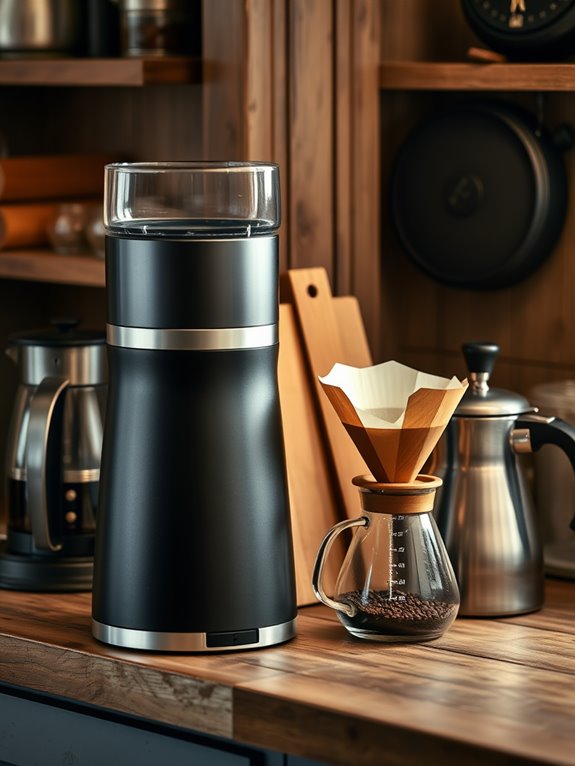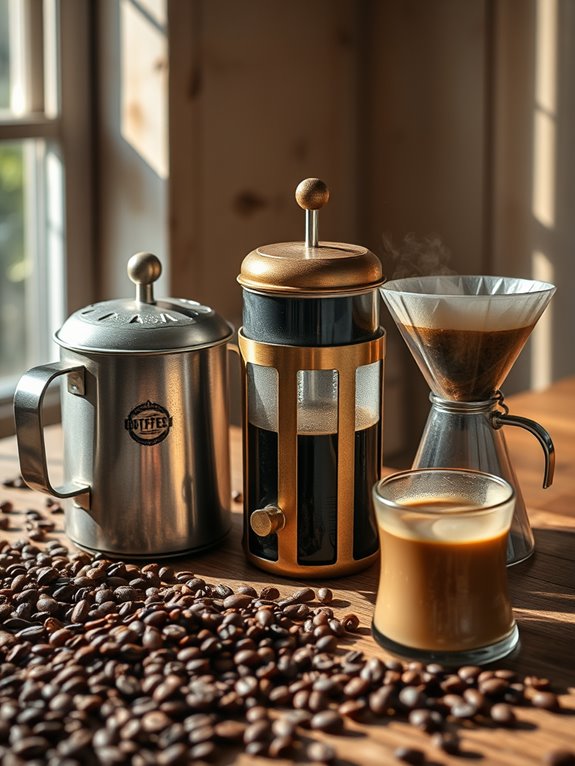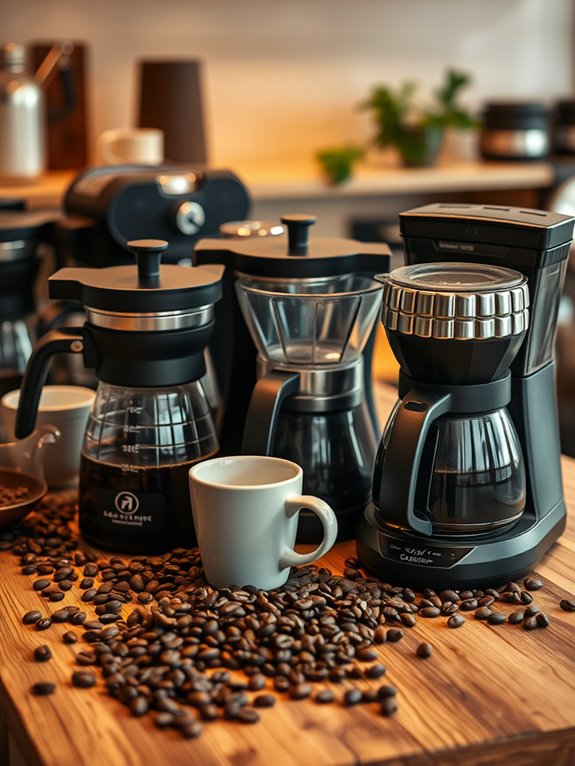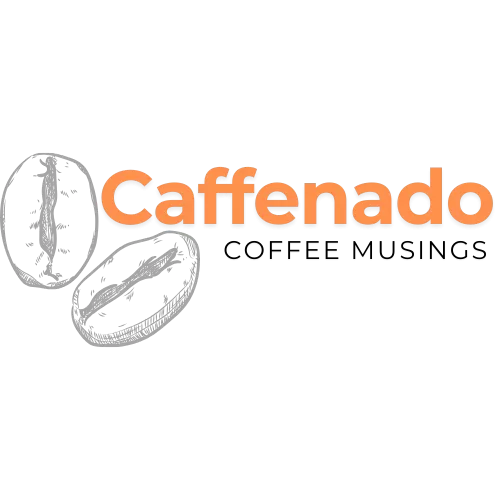Do You Need a Coffee Maker to Make Coffee
You don't need a coffee maker to brew a great cup of coffee. Instead, try traditional or non-electric methods like a French press or pour-over, which use hot water and simple tools. For example, cowboy coffee is made by steeping grounds directly in hot water, while cold brew just requires patience to steep in cold water. These methods provide control over flavor without complex equipment. Let's investigate different coffee brewing methods for more details.
Key Takeaways
- Non-electric methods like French press and pour-over don't require a traditional coffee maker.
- Cowboy coffee can be made by steeping grounds directly in hot water.
- Cold brew only needs a container and time for steeping in cold water.
- A kettle or stove can heat water without needing an electric coffee maker.
- Manual brewing methods offer more control over flavor and strength.
Essential Equipment for Brewing Coffee

When it comes to brewing coffee, having the right equipment can make all the difference between a mediocre cup and a pleasing experience. You'll need a coffee maker, like a drip or French press, to brew your perfect cup. A grinder is crucial for fresh grounds, with burr grinders yielding the best consistency. The conical burr grinders provide the most uniform grounds for optimal flavor extraction. Quality coffee beans sourced globally are essential because the flavor journey begins with the selection of beans. A kettle, especially gooseneck, offers precise water control. Use a coffee scale for accuracy in measurements. Coffee filters are fundamental—paper filters give a cleaner taste, while metal ones offer fuller flavor.
Let's examine these tools to enhance your coffee-making experience at home.
Exploring Traditional Coffee Brewing Methods
Drip coffee involves pouring hot water through a filter containing grounds, which drip into a pot.
Pour-over uses a cone and filter system, with hot water poured over evenly.
The French press steeps coarsely ground beans in hot water, then uses a plunger to separate grounds.
Percolate coffee cycles boiling water through grounds until strong.
The AeroPress coffee maker offers a unique hybrid method that combines pressure and immersion brewing for rich flavor.
Key Factors
Grind size, water-to-coffee ratio, and brewing time all impact flavor.
Precision and freshness guarantee the best results.
Let's investigate these methods and reshape your coffee ritual!
Non-Electric Alternatives for Coffee Making

Non-electric coffee making offers fascinating possibilities for those who love brewing coffee without the need for electricity. You can heat water manually using a gas stove, fire, or portable stove.
Methods like French press and pour-over require hot water and simple tools. A French press immerses grounds for a rich brew, while pour-over involves pouring water over grounds in a filter.
Cowboy coffee is straightforward: add grounds to hot water and steep. Cold brew needs only time as it steeps in cold water.
Medium roast coffee provides a balanced flavor profile that works well with any brewing method.
Experiment with brewing times and grind sizes to perfect your flavor. Let's investigate these methods together!
Comparing Electric and Non-Electric Coffee Makers
Electric coffee makers automate the brewing process, saving you time and effort, especially with programmable settings that cater to varying coffee preferences. They're convenient, often featuring automatic shut-off and alerts, making them ideal for busy lifestyles.
Non-electric models, meanwhile, demand more manual interaction but offer enhanced control over your coffee's taste.
While electric makers excel in speed and efficiency, especially for large groups, manual makers provide a traditional brewing experience.
Both have their merits, so let's investigate which might suit your needs better in the next section.
Though automatic machines offer multiple drink options, they typically require more maintenance and come with a higher upfront cost compared to manual brewing methods.
Key Considerations for Choosing Your Brewing Method

When deciding how to brew your coffee, what factors should you consider to find the perfect method for you? Let's examine flavor, grind size, brewing time, and equipment. Full immersion methods like French Press give a strong flavor, while pour-over methods like Chemex offer a cleaner taste. Your grind size matters—fine for espresso, coarse for French Press. Control over brewing time can enhance or weaken your coffee's strength. Equipment also plays a role; for ease and travel, consider an AeroPress. Here's a quick comparison:
| Aspect | Full Immersion | Pour-Over |
|---|---|---|
| Flavor | Strong | Clean |
| Grind Size | Coarse | Fine |
| Brewing Control | High | Moderate |
| Equipment | Easy | Moderate |
| Portability | Good | Fair |
Practicality and Benefits of Different Brewing Styles
Exploring the practicality and benefits of different brewing styles can enhance your coffee-making experience, whether you're a beginner or a seasoned enthusiast.
French Press: This method requires minimal equipment and space, offering excellent flavor control.
It's affordable, easy to use, but cleanup can be messy.
Pour-Over: Allows high control over brewing variables, ideal for 1-2 cups.
Larger brewers like Chemex suit groups, with grind size adjustments for best results.
Full Immersion vs Pour-Over**: Full immersion** keeps coffee in contact with water throughout brewing, while pour-over regulates flow.
AeroPress exemplifies full immersion with filters.
Each style uniquely affects coffee extraction, offering diverse flavor profiles.
Deciding on the Right Coffee Maker for Your Needs

Selecting the right coffee maker might seem like a challenging task, yet it's all about understanding what suits your lifestyle and preferences best. Let's examine key factors to contemplate:
| Feature | Description |
|---|---|
| Ease of Use | Automatic features simplify brewing, while manual machines offer control. |
| Versatility | Some machines brew both coffee and espresso, offering more options. |
| Design | Compact and sleek designs fit well in any kitchen; portability is a bonus. |
| Budget | Entry-level to high-end machines vary in features and performance. |
Reflect on how much control you want over your brew, the space available, and your budget to choose the best fit.







